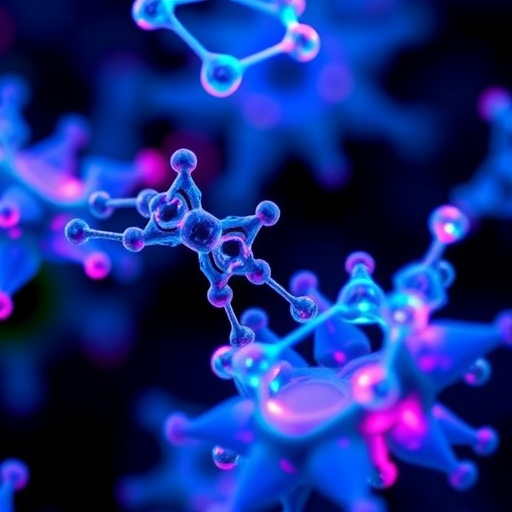Pharmaceutical scientists at the National University of Singapore (NUS) have unveiled a groundbreaking methodology that revolutionizes the kinetic analysis of enzymes. This innovative approach enables researchers to measure the kinetic efficiency of an enzyme against a staggering array of over 200,000 potential peptide substrates in a singular experiment. This significant advancement addresses a long-standing challenge in biochemistry, facilitating deeper insights into enzyme-substrate interactions, which are essential for the engineering of new biocatalysts and the design of therapeutics.
The establishment of a comprehensive understanding of how enzymes interact with their substrates has always presented a complex yet fundamental task in the field of biochemistry. The ability to quantify these interactions is pivotal for the development of more efficient enzymes, which hold promise for applications ranging from drug discovery to industrial biocatalysis. Traditionally, methodologies that sought to explore these interactions often fell short due to logistical limitations in scaling experiments effectively. The research team at NUS, led by Assistant Professor Alexander Vinogradov, sought to bridge this gap with their novel technique named DOMEK, which stands for mRNA-display-based one-shot measurement of enzymatic kinetics.
DOMEK is a versatile, integrative pipeline that elegantly combines mRNA display technology with high-throughput next-generation sequencing. This combination allows for the rapid preparation of a vast library of enzymatic substrates, thereby making it possible to ascertain the specificity constant (kcat/KM) for each substrate simultaneously. The methodology is particularly appealing because it requires no specialized engineering expertise, relying instead on standard molecular biology equipment that is readily available in most laboratories. This accessibility could democratize research across diverse institutions, making cutting-edge enzymatic kinetics analysis more attainable.
Furthermore, DOMEK not only represents an operational advancement in experimental techniques but also produces an extensive dataset that can be used for deep statistical modeling. By employing sophisticated analytics, the NUS team has begun to glean insights into the intricate recognition mechanisms of enzymes as they interact with diverse substrates. This understanding could prove invaluable, illuminating the exquisite catalytic efficiencies exhibited by enzymes, which are often far beyond those of man-made catalysts.
The implications of this research extend into numerous fields including biotechnology, pharmaceuticals, and environmental science. Characterizing the kinetic landscape of enzymes could lead to innovative applications, including the creation of tailored enzymes for specific therapeutic applications and the development of robust bioprocesses for industrial manufacturing. The research team’s efforts resonate strongly with ongoing pursuits in the biocatalysis field to identify new ways to enhance enzyme functionality and stability.
In their recent study, published in the esteemed journal Chem, the researchers conducted a comprehensive profiling of a bacterial reductase enzyme, effectively monitoring its kinetic behavior across an impressive array of 285,000 distinct peptide substrates. This singular profiling effort not only quantified enzyme kinetics in a previously unattainable manner but also laid the groundwork for validation of these results through conventional methods. The success of the DOMEK approach was described by Asst. Prof. Vinogradov as an unprecedented opportunity to gather kinetic data at a scale that had previously been elusive.
Looking toward the future, the NUS research team is poised to expand their DOMEK framework further. Their ambitions include scaling the methodology to evaluate millions of reactions in parallel, thereby unlocking even greater potential for exploration and innovation in enzymatic research. Such advancements could significantly contribute to our understanding of enzymes involved in post-translational modifications of peptides and proteins, which are critical in regulating various biological processes and therapeutic responses.
The insights gained from harnessing DOMEK could catalyze shifts in how researchers approach enzyme engineering and therapeutic development. By providing a clearer picture of enzymatic preferences and efficiencies, this methodology opens new avenues for the rational design of biocatalysts tailored to specific industrial and medical applications. The scalability of this research and its applicability to a wide range of enzymes make it an exciting development for the scientific community.
As the landscape of enzymatic research evolves, the potential for DOMEK and its applications continues to grow. The NUS team’s pioneering work encapsulates a significant leap forward, echoing a clarion call for ongoing innovation in enzymatic characterization and biocatalyst design. This new frontier in biochemistry promises robust outcomes that could transform therapeutic development, industrial applications, and even environmental management, emphasizing the critical intersection of fundamental science and real-world utility.
In summary, the rapid development of methodologies such as DOMEK represents a promising future for enzymatic research, wherein the ability to measure and understand enzyme kinetics on a grand scale becomes increasingly feasible, providing a solid foundation for the next breakthroughs in biochemistry and beyond.
Subject of Research: Enzymatic kinetics measurement method
Article Title: Measuring kcat/KM values for over 200,000 enzymatic substrates with mRNA display
News Publication Date: 3-Sep-2025
Web References: 10.1016/j.chempr.2025.102737
References: N/A
Image Credits: National University of Singapore
Keywords
Enzyme kinetics, mRNA display, biocatalysis, substrate specificity, pharmaceutical research, enzymatic characterization, high-throughput sequencing.




